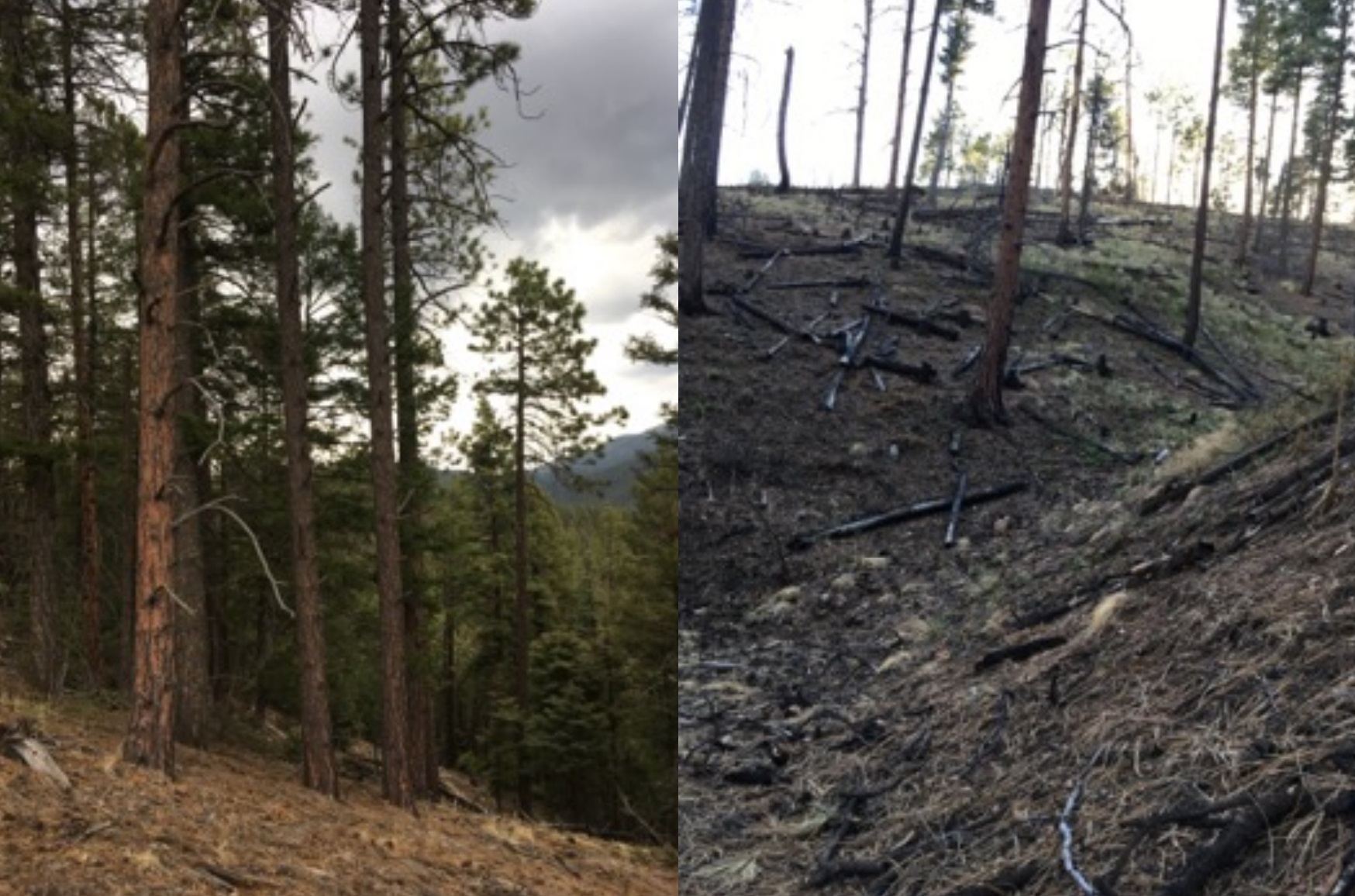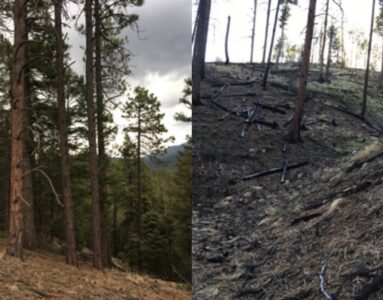Tuesday, August 28, 2018
Groups Seek to Halt Cutting and Burning in
Wilderness Quality Forests Near Santa Fe
A Federal Judge is asked to enjoin the Hyde Park
and Pacheco Canyon Projects
Contact: Sam Hitt, 505-577-2944, sam@wildwatershed.org
Additional Contacts:
Tom Woodbury, attorney, 650-238-8759, tom@wildlandsdefense.org
Dr. Ann McCampbell, 505-466-3622, drannmcc@aol.com
Jan Boyer, 505-982-4322, sfjanboyer@gmail.com
SANTA FE—Today conservationists and public health advocates asked U.S. federal Judge James A. Parker to halt intentional burning and the radical removal of
90 percent of the trees on more than 4300 forested acres above Santa Fe until
the U.S. Forest Service prepares a comprehensive environmental study that
weighs the impacts of smoke on public health and massive tree clearing on old
growth forests, wildlife populations and potential wilderness.
Wild Watershed, the Multiple Chemical Sensitivities Taskforce and two individual
plaintiffs allege the controversial Hyde Park and Pacheco Canyon projects together with other projects fail to consider the environmental consequences of
tree clearing and burning planned on 167 square miles of forests in the coming
years from the Santa Fe Ski Basin to near Pecos.
The projects call for leaving between 5 and 120 trees per acre with an average of
40 to 60 trees left per acre. A minimum of 90 and a maximum of 99 percent of existing forest cover would be removed over large areas. Every acre in the two
projects would be either cut or burned, often both. See attached before and after
photos.
Intentional burning will continue yearly on thousands of acres near Santa Fe producing far more greenhouse gases than infrequent high intensity fires. Clearing
90 percent of the trees also diminishes the absorption of carbon dioxide further
contributing to global warming.
“Clean air, water and old growth forests should remain undisturbed pending a ruling on whether environmental laws have been violated. Otherwise human health
and wild forests are harmed before a federal judge can decide whether the Forest Service has taken a hard look at its flawed assumptions. Chief among these
is the claim that undisturbed forests in roadless areas pose a fire risk” said Sam
Hitt founder of Wild Watershed.
In March the Santa Fe national forest “categorically excluded” the Hyde Park
project and in June the Pacheco Canyon project from detailed environmental review declaring there are no significant environmental impacts. The public was
then prevented from objecting or appealing the decision.
According to Dr. McCampbell, “How is it possible that removing 90% of a forest
will result in no significant environmental impacts? I can’t imagine anything having more of an impact, especially on habitat and wildlife”.
Plaintiffs allege that the Santa Fe national forest failed to assess the effects of
toxic smoke from prescribed fire on infants, mothers, asthmatics and those with
multiple chemical sensitivities. Slow burning prescribed burns emit large amounts
of fine particulate matter that lodge deep in the lungs. Smoke from prescribed
fires contains mercury, a neurotoxin, and benzene, a carcinogen, as well as several other toxic air pollutants.
The Hyde Park project is within the more than 30,000 acre proposed Black
Canyon addition to the Pecos Wilderness. This area was described last year by a
coalition of conservation groups as appearing “undisturbed and shaped by natural forces, with the scattered imprints of man substantially unnoticeable.”
Intensive tree clearing and burning will destroy Hyde Park’s wilderness character
and make formal wilderness designation unlikely.
Old growth forests with ponderosa pines over 180 years old are not identified or
protected. These primeval roadless forests that have never been logged are
threatened by extreme clearing despite research showing they are not a high fire
risk.
The projects are unlikely to encounter the fire they are designed to withstand.
Fuels treatments (cutting and burning) are only effective in reducing fire risk for
10 to 15 years. The chance of a moderate to high intensity fire occurring in the
project areas during that time is between 3 and 8 percent. Since the impacts of
repeat treatments were not considered, it is likely that any benefits of fire risk reduction are outweighed by the environmental cost.
Historically forests in Hyde Park experienced both frequent low intensity fires and
occasionally fires where most trees were killed. Aspens along the Ski Basin road
are the result of large, hot fires in the 1890s. A mix of fires with high, moderate
and low severity is characteristic of these forests and ecologically important. According to a 2015 study of western forests including Hyde Park “the rate of recent
high-severity fire in dry forests is within the range of historical rates.
Preserving Southwestern forests and wildlife

